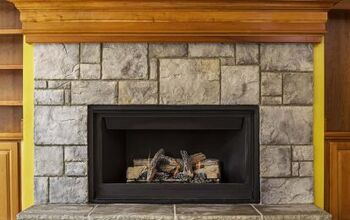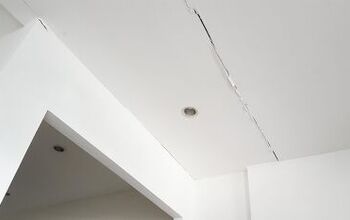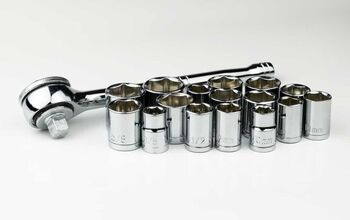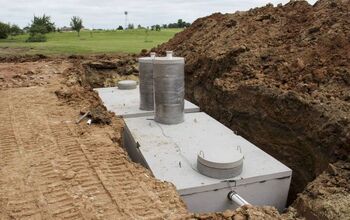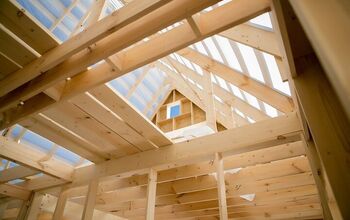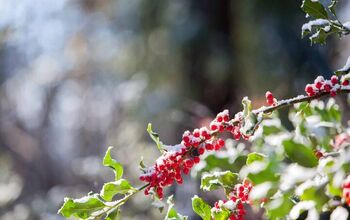Different Types Of Gravel And How To Use Them

Gravel is everywhere. It’s used in driveways, streets, sidewalks, and even gardens. It has all sorts of practical purposes around the home, and it is often the most budget-friendly option for many DIY projects. If you are planning a project that involves gravel, it’s important you know all the different gravel types and materials, as well as what you should use them for.
Gravel is typically categorized by what it is made of and its size. The standard gravel sizes are fine, medium, and coarse. Pea gravel and bank gravel are often considered gravel sizes, as both types are unique in their size and uses. Common gravel materials include mixed stone, slate, and lava rock. Different materials offer unique colors and textures, and some are more expensive than others.
Gravel comes in just about any size, shape, and color. Just because there are endless types of gravel to choose from, however, it doesn’t mean that every gravel is a good idea for every project. Each type has its advantages and disadvantages. If you are planning to work with gravel in the near future, then keep reading to learn all about the different types of gravel and what you should use each type for.
Five Types Of Gravel And What To Use Them For
1. Fine
The smallest type of gravel is called fine gravel. This can range in size from sand to any gravel less than ⅜ inch in diameter. This is typically the smallest type of gravel used for any DIY or construction project.
When To Use Fine Gravel: Fine gravel is often used to help level out ground, as it is small enough to compact, but still provides drainage. Therefore, it is a great option to fill a small hole, or to use as a bottom layer for an outdoor patio.
It will keep the ground sturdy and allow for drainage. It is also sometimes used in home landscaping, but pea gravel is more common.
2. Pea
Pea gravel is another small type of gravel that is usually between ⅛ of an inch and ⅜ of an inch in size. It is often labeled as pea gravel and typically comes in mixed stone form.
The stones are the size of peas, and they are usually soft and round, not sharp like other types of gravel. Since this gravel is usually composed of different types of stones, it tends to be multi-colored.
When To Use Pea Gravel: This is a very popular type of gravel for outdoor pathways and DIY gravel patio areas. Thanks to its size, it is easy to walk on, and the soft stones even allow you to walk on them barefoot.
It is also used as a mulch substitute for some plants, but may be too heavy for species with sensitive roots. While common for outdoor pathways, this gravel can damage lawn mowers, so it should be placed strategically.
3. Medium
As its name suggests, medium gravel is between small gravel and large gravel. It is also referred to as “brushed” gravel. Medium gravel is the next size up from pea gravel, and can be as large as ¾ of an inch in diameter. It can be smooth or sharp, and made of various materials.
When To Use Medium Gravel: This is a great gravel to use for driveways. Its size allows this gravel to stay in place better than small gravel, and it can also withstand the weight of heavy objects like cars. Medium gravel is also a great choice for drainage, as its large size allows for faster drainage than smaller gravel.
4. Coarse
Coarse gravel is typically the largest gravel used for home improvement projects. Anything larger than this and you are essentially dealing with rocks, not gravel. In fact, this gravel can be as large as 2 inches in diameter, meaning it can be gravel made from rocks.
When To Use Coarse Gravel: This is a popular filler gravel for larger construction projects. It can also be used to make a primitive road or driveway. Its large size makes it less likely to wash away in storms, and also makes it great for drainage purposes.
5. Bank
Bank gravel is essentially unfiltered and unsifted gravel. It is the material you get directly from a bank. It has stone, dirt, and gravel all mixed into it. It’s easy to find this gravel near a rock quarry, and it is usually the easiest gravel to find for free.
When To Use Bank Gravel: Bank gravel is a great filler. It provides better drainage than soil, but isn’t as rocky as most gravels. If you find it for free, you can sift and sort it to remove the dirt and use it for other projects as well.
Five Common Gravel Materials (With Pros And Cons)
1. Mixed Stone
One of the most common gravel materials is mixed stone. This is usually what pea gravel is made of, as well as most cheap medium and coarse gravels. Since it’s a mixed bag, it can have all sorts of rocks in it.
Pros: This tends to be a cost-effective type of gravel. Since there are various colors that are usually earthy in tone, it tends to be a non-offensive gravel. Stones are also usually very sturdy and give off little dust.
Cons: This gravel isn’t very attractive. When it’s cheap it also can look rather dirty. Course mixed stone gravel can be sharp and shouldn’t be walked on without shoes.
2. River Rock
River rock gravel is known for its smooth and soft texture. It typically has a clean, multi-colored appearance. It is called river rock gravel because it has the soft and smooth edges of river rock.
This is typically a medium or large gravel type.
Pros: It is great for walkways, as it is very easy on your feet. It is also very beautiful and decorative, making it a good option for your garden and landscaping projects, especially around your pool plants.
Cons: The main con of this gravel is its price. It is usually significantly more expensive than pea gravel and mixed stone gravel, and it can therefore significantly increase the price of your DIY project.
3. Slate
Slate gravel is a common small to medium gravel type. It is made of slate rock, which is an easy-to-crush bluish-gray stone. It is known for its chalky and gray appearance. It is commonly used for walkways and driveways.
Pros: This smaller gravel is fairly compact, which provides a firm surface. You can easily put a table and chairs on slate, and it’s easy to walk on. The muted gray tone can be appealing, especially in a minimalist setting.
Cons: Slate is not a strong stone, so it can crack and turn to dust under pressure. It is also dusty in general, which means it can leave a residue, especially when it’s very dry.
4. Lava Rock
Lava rock gravel is typically either red or black in color, and made up of the porous lava that it comes from. It typically has many holes, which makes it much lighter than stone gravel. This also makes it a great insulator.
Pros: Lava rock has a unique color, and its red or black tones can have a dramatic effect on the yard. This is a light gravel which makes it a great mulch substitute, as it can insulate your plants without crushing them.
Cons: This gravel can crush under weight, which makes it less than ideal for driveways. It can also be quite sharp and painful to walk on. The many holes in lava rock make it easy for weeds to pop through.
5. Marble
Marble gravel can be several colors but it is often white. It is made of marble pieces and tends to be medium or large in size. It is decorative and commonly used for driveways and walkways, as it looks great and the rocks are very strong.
Pros: This is a beautiful gravel, especially the white variety. It makes a great looking pathway when you don’t want to use concrete. The rocks themselves are also heavy and firm.
Cons: This is one of the most expensive types of gravel. It is not an ideal gravel to use for large projects or if you are on a tight budget.
Summing Up Different Gravel Types And When To Use Them
Gravel is all around but few people know there are many types. Gravel is categorized in size from small and pea gravel to medium and large varieties. Some great budget-friendly gravels include mixed stone and slate gravel. Lava, river rock, and marble gravels are all aesthetically pleasing options. River rock and marble gravel are stunning, but they tend to be the most expensive gravel materials.
Related Guides:
- How Much Does Pea Gravel Cost? (Per Ton, Cubic Yard & Truckload)
- How Much Does A Gravel Driveway Cost?
- Can You Put A Hot Tub On Gravel?

Tom Gaffey is an expert writer who currently resides in Washington D.C. Tom has a passion for real estate and home improvement writing, as well as travel and lifestyle writing. He lived the last twelve years in Hawaii where he worked closely with luxury resorts and event planners, mastering his knowledge of aesthetics and luxury products. This is where he found his passion for home improvement and a keen interest in DIY projects. Currently, Tom resides in Washington D.C, and also working on his debut fiction novel.
More by Tom Gaffey
















